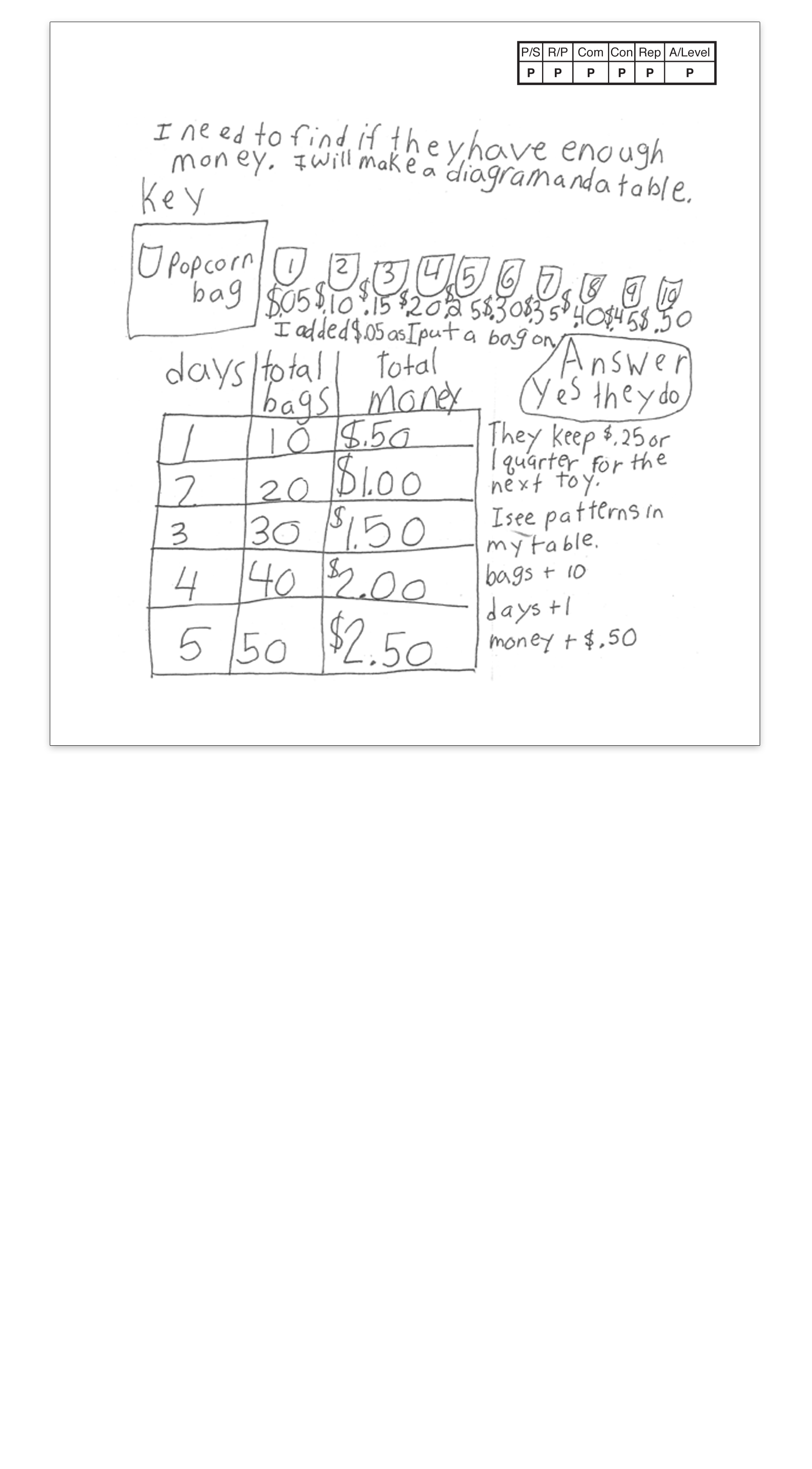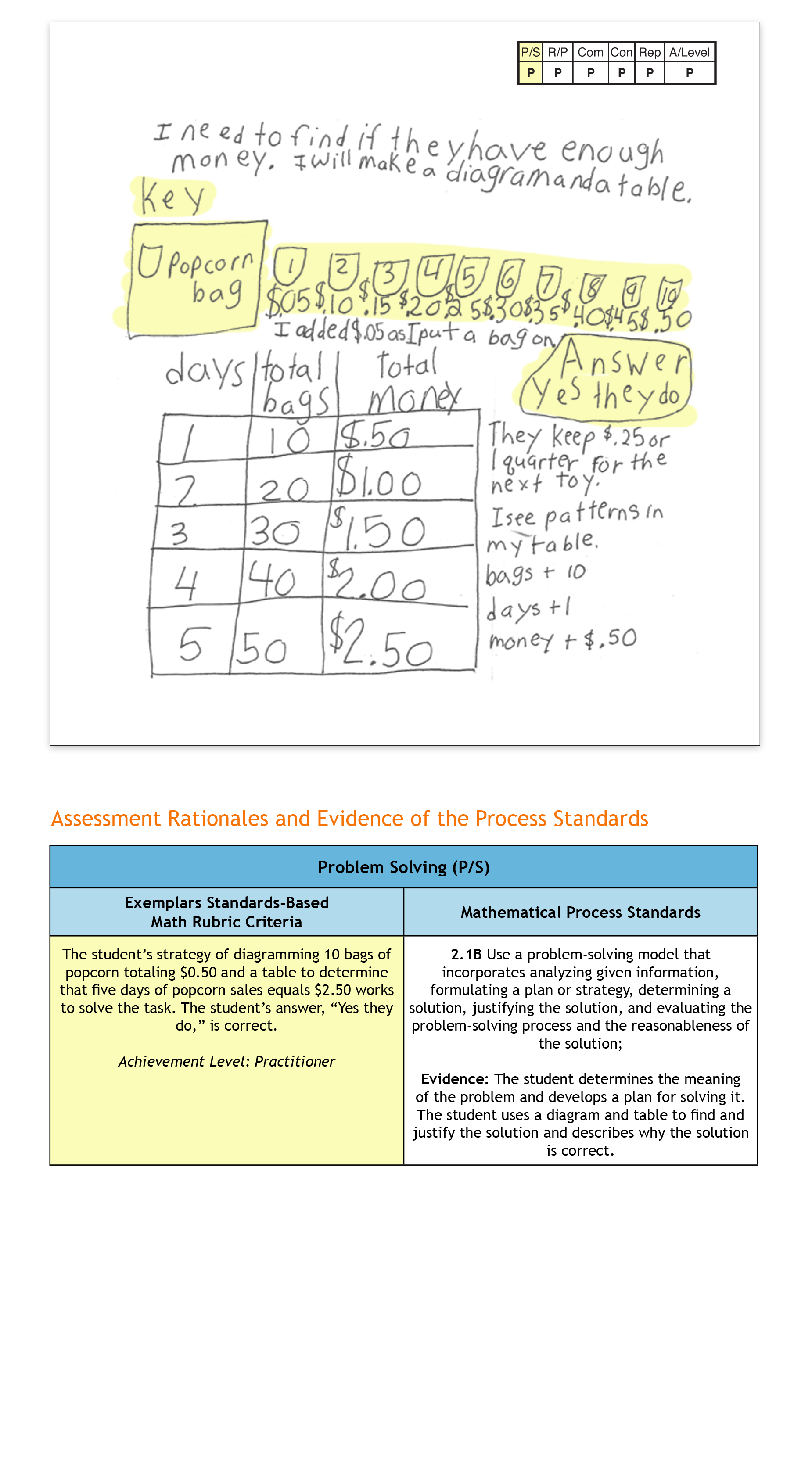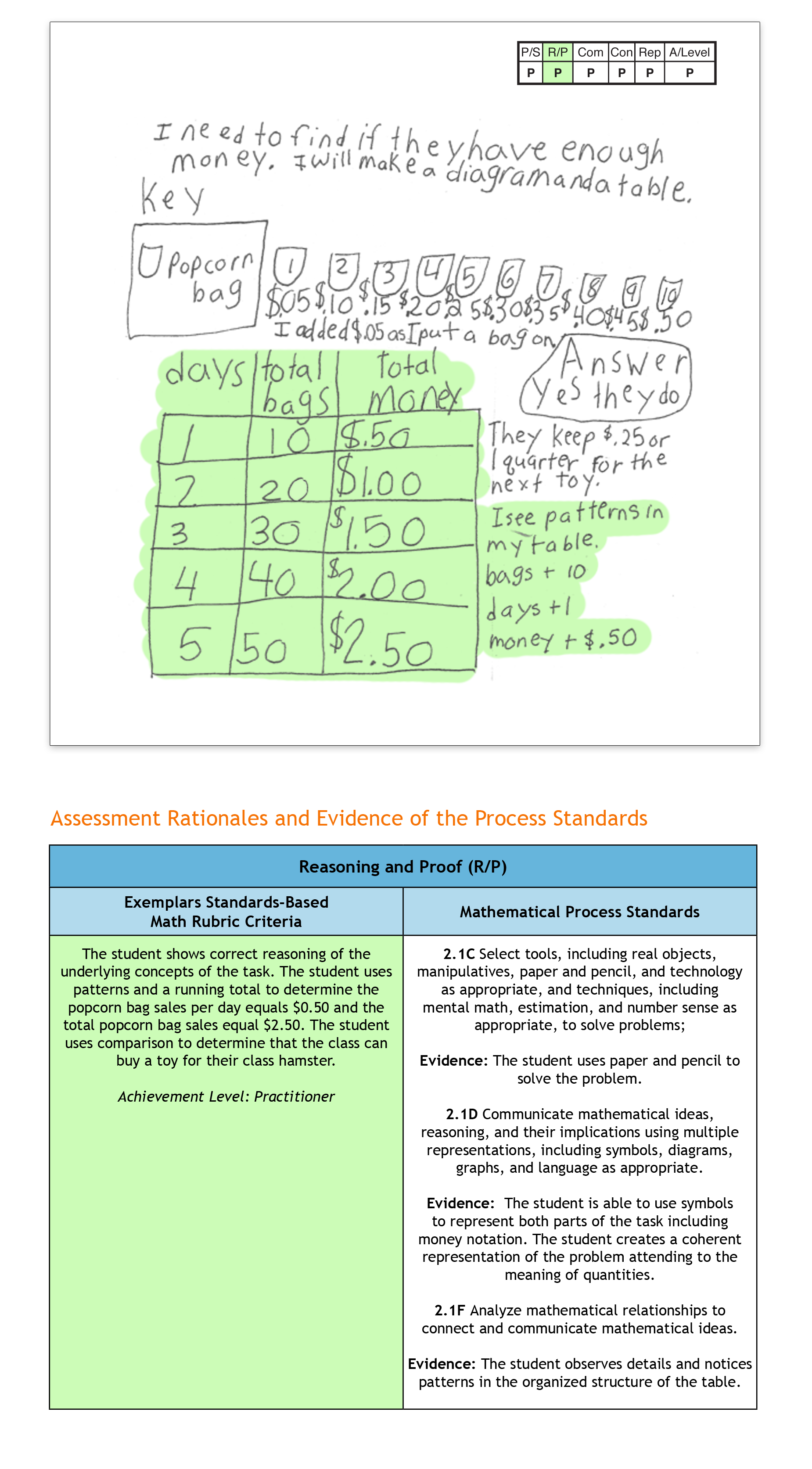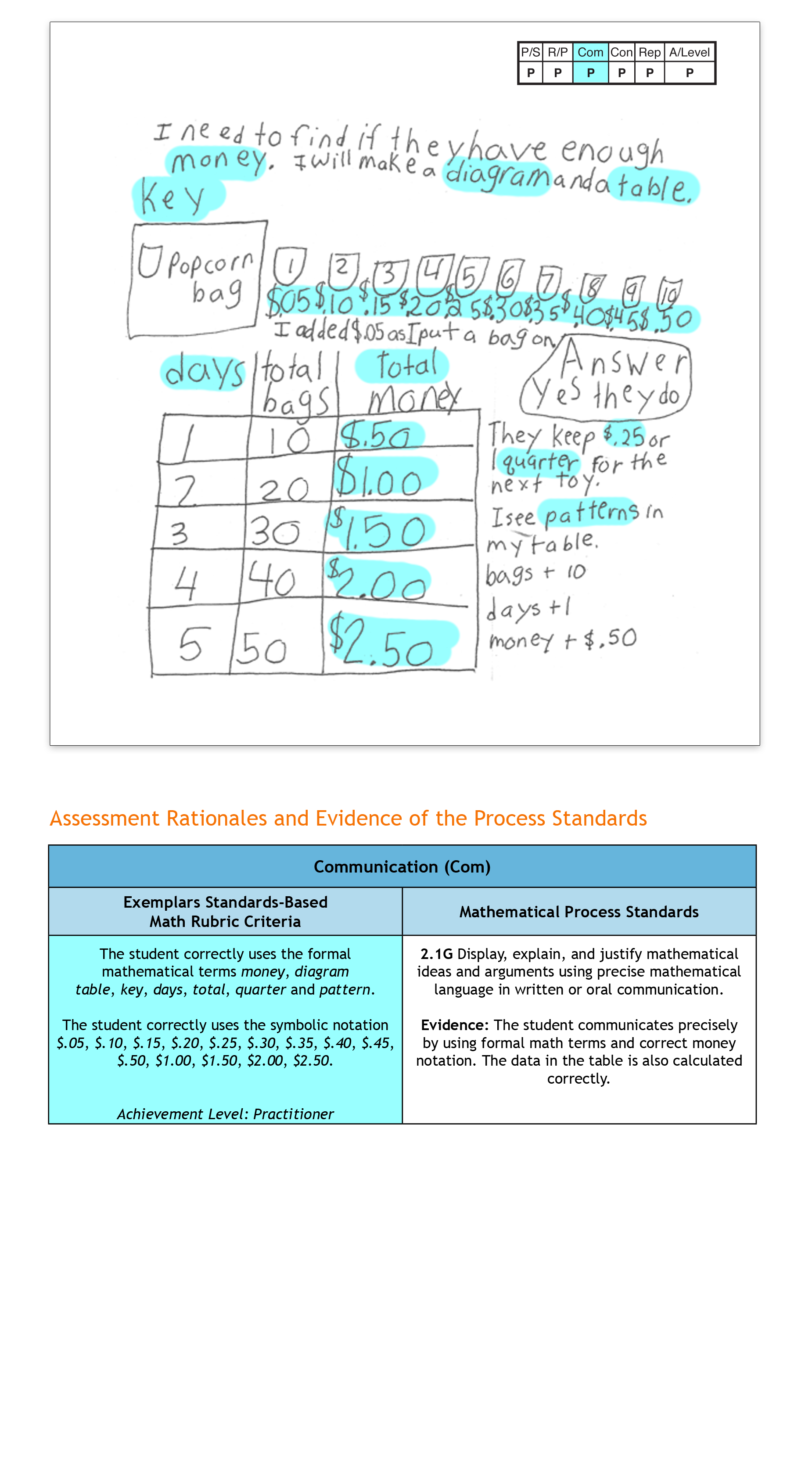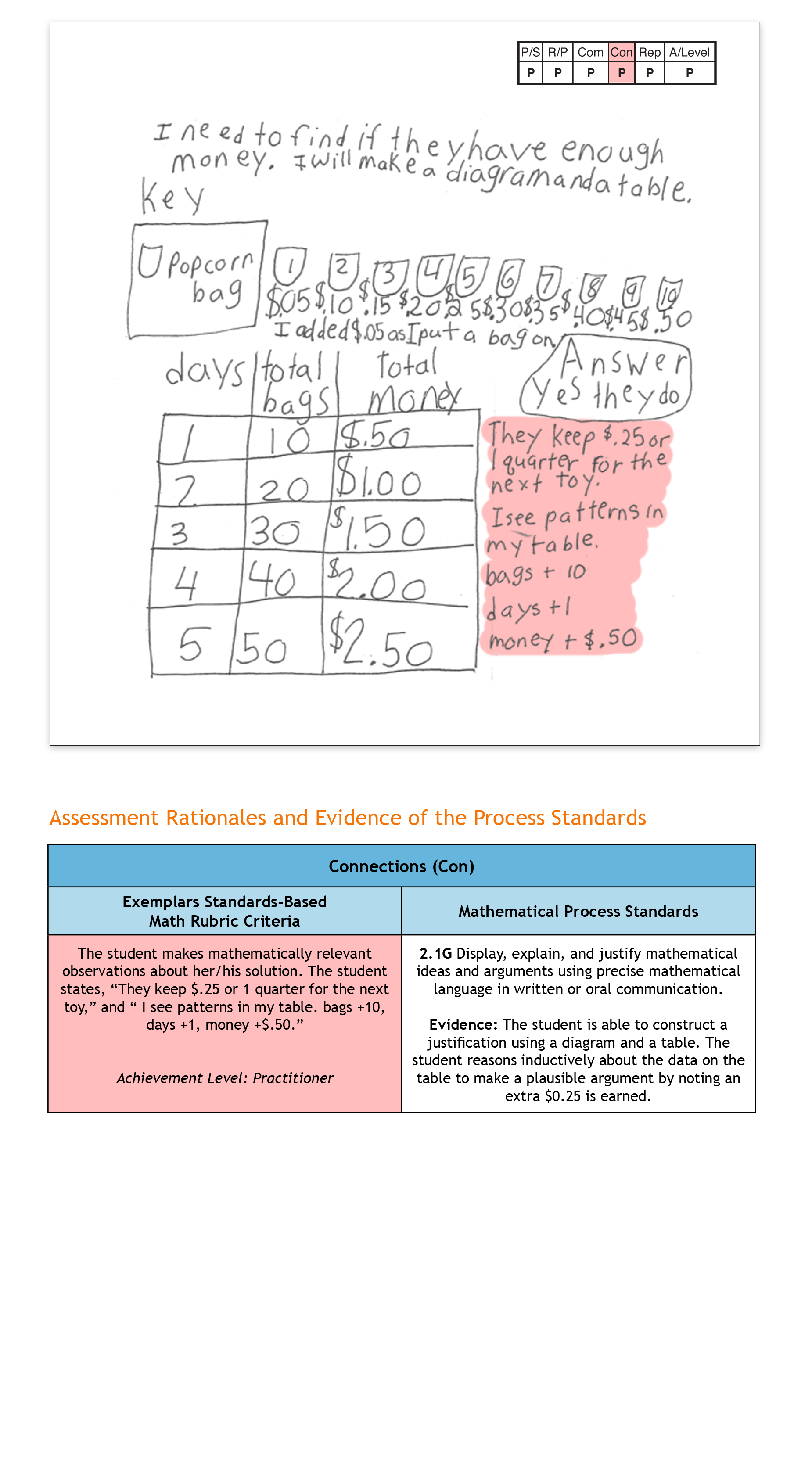Supporting the TEKS Mathematical Processes with Exemplars Performance Tasks and Rubric at the Second Grade Level
Written By Exemplars Math Consultants: Deborah Armitage, M.Ed. and Dinah Chancellor, M.Ed.
Blog Series Overview:
Exemplars performance-based material is a supplemental resource that provides teachers with an effective way to implement the Math TEKS through problem solving. This blog represents Part 3 of a five-part series that features a problem-solving task linked to a Math TEKS Unit of Study and a student’s solution in grades K-5. Evidence of all seven Mathematical Process Standards will be exhibited by the end of the series.
The Exemplars Standards-Based Math Rubric allows teachers to examine student work against a set of analytic criteria that consists of the following categories: Problem Solving, Reasoning and Proof, Communication, Connections and Representation. There are four performance/achievement levels: Novice, Apprentice, Practitioner (meets the standard) and Expert. The Novice and Apprentice levels support a student’s progress toward being able to apply the criteria of a Practitioner and Expert. It is at these higher levels of achievement where support for the Mathematical Processes is found.
Exemplars problem-solving tasks provide students with an opportunity to apply their conceptual understanding of standards, mathematical processes and skills. Observing student anchor papers with assessment rationales that demonstrate the alignment between the Exemplars assessment rubric and the Math TEKS can be insightful for educators. Anchor papers and assessment rationales provide examples of what to look for in your own students’ work. Examples of Exemplars rubric criteria and the Mathematical Processes are embedded in the assessment rationales at the bottom of the page. The full version of our rubric may be accessed here. It is often helpful to have this in hand while reviewing a piece of student work.
Blog 3: Observations at the Second Grade Level
The third anchor paper and set of assessment rationales we’ll review in this series is taken from a second grade student’s solution for the task, “A New Hamster Toy.” This is one of a number of Exemplars tasks aligned to the Problem Solving with Money Unit.
“A New Hamster Toy” would be used toward the end of the learning time allocated to this standard. This task provides second grade students with an opportunity to apply different strategies to determine if there is enough money to buy a hamster toy for $2.25. The task does not provide the symbolic notation for $2.25, $0.05, or 5¢. Students need to bring this understanding to their solutions, which provide the teacher with an opportunity to assess if they can correctly notate money. This task also provides students with the opportunity to use comparison and to solve a problem that includes two steps. Students need to determine the popcorn bag sales for one day, determine the total sales for five days and compare that total to $2.25.
When forming their solutions, students have a variety of strategies to consider. Some examples include using actual money to model the bag sales and total bag sales, diagramming the bags and/or money earned, creating a table to indicate popcorn sales for one or five days, using a printed number line, creating a number line or a tally chart.
Second Grade Task: A New Hamster Toy
Some students want to earn two dollars and twenty-five cents to buy a toy for their class hamster. The students decide to sell small bags of popcorn at snack time for five cents each. The students sell ten bags every day for five days. Do the students earn enough money to buy a toy for their class hamster? Show all your mathematical thinking.
Math TEKS Alignments
Exemplars Problem Solving with Money Unit
The Problem Solving with Money Unit involves knowing the relationship between U.S. coins, how to use skip counting and other methods to find the value of a collection of coins, and answer questions such as:
- If you have saved a given amount of money and you know a toy costs a certain amount, how can you figure out how much more you need to save to buy the toy?
- If you have a collection of coins worth 30 cents and put a quarter in your bank every week, how much money will you have in three months?
The standards covered in this Unit include:
2.5 Number & Operations:
- 2.5A determine the value of a collection of coins up to one dollar
- 2.5B use the cent symbol, dollar sign, and the decimal point to name the value of a collection of coins.
Mathematical Process Standards
- 2.1A apply mathematics to problems arising in everyday life, society, and the workplace;
- 2.1B use a problem-solving model that incorporates analyzing given information, formulating a plan or strategy, determining a solution, justifying the solution, and evaluating the problem-solving process and the reasonableness of the solution;
- 2.1C select tools, including real objects, manipulatives, paper and pencil, and technology as appropriate, and techniques, including mental math, estimation, and number sense as appropriate, to solve problems;
- 2.1D communicate mathematical ideas, reasoning, and their implications using multiple representations, including symbols, diagrams, graphs, and language as appropriate;
- 2.1E create and use representations to organize, record, and communicate mathematical ideas;
- 2.1F analyze mathematical relationships to connect and communicate mathematical ideas; and
- 2.1G display, explain, and justify mathematical ideas and arguments using precise mathematical language in written or oral communication.


